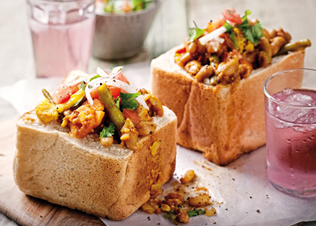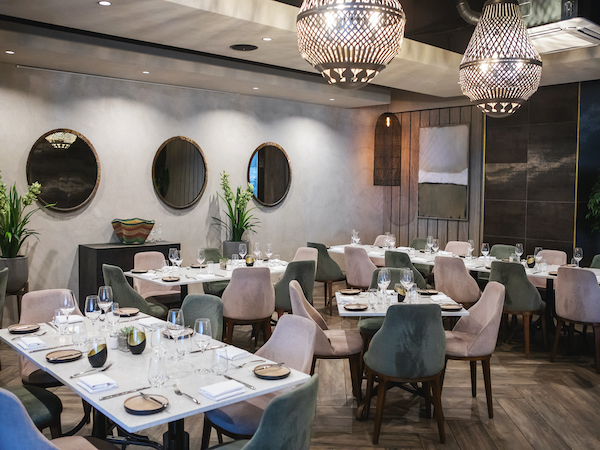News
A-Z of Indian cuisine
Tuesday, April 17th, 2012
Choosing Indian cuisine can be tricky for the uninitiated. What’s the difference between North and South Indian cuisine? What is ‘aloo gobi’ (apart from a particularly pleasing phrase to say)? And how on earth do you stop the burning? To help you learn your korma from your kadai, we’ve put together a quick guide to Indian cuisine.
North vs South
For starters, Northern Indian cuisine is generally hotter, and usually accompanied by unleavened breads like chappatis, paratha and pooris. Southern Indian cuisine meanwhile, is predominantly rice-based, less fiery, and richer in dairy products. Seafood and vegetarian dishes are common, as well as dishes incorporating coconut milk. In South Africa, most restaurants specialise in North Indian cuisine, though some serve a combination of both, along with South African Indian dishes such as bobotie and bunny chow.
How to put out the fire
If your mouth is burning like a veld fire, capsaicin – the natural oil found in chillis – is the cause of your woes. Drink milk or other dairy products such as yoghurt or ice cream (it’s as good an excuse as any). Milk products contain something called casein, which will separate the burning compounds from your taste buds. And avoid alcohol – capsaicin is soluble in alcohol, so it will spread the burning sensation around your mouth.
Common curries
Biryani – a baked curry, layered with rice. Commonly used by housewives to use up leftover curry from the night before.
Bobotie – a Cape Malay dish, bobotie consists of spiced beef mince, baked with egg on top.
Bunny chow – a hollowed out half-loaf of bread, filled with curry.
Dopiaza – meaning ‘two onions’, this dish contains a large amount of onion, which is added at two different stages.
Kadai – a creamy Punjabi dish made with dry fenugreek leaves.
Korma – Meaning grilling or roasting, korma is generally considered to be a dish, rather than a cooking method. Usually it is made with yoghurt or cream, and cooked over a low heat to keep the yoghurt from curdling.
Madras – hailing from the city of Madras (now Chennai) this red curry sauce is relatively hot curry sauce, with coconut, tamarind and anise.
Makhani – a Hindustani word meaning ‘with butter’, this is one of the richest of the curries, also incorporating cream.
Rogan josh – A Kashmiri dish, cooked in oil at high heat (‘rogan’ means oil, while ‘josh’ means hot). The use of mild Kashmiri chillies gives it a red colour, and a comparatively mild flavour.
Sagwala – A creamy spinach and garlic sauce with green chilli.
Tandoori – named for the clay oven in which it is cooked, this is a roasted dish.
Tikka masala – a creamy spiced orange sauce, particularly popular in the UK.
Vindaloo – one of the hotter curries around, vindaloo is actually based on a Portuguese dish using pork, wine and garlic. The Indian variant substitutes palm vinegar for wine and includes red Kashmiri chillies.
Commonly listed ingredients
Aloo – potatoes
Gobi – cauliflower
Panneer – an un-aged cottage cheese made from curdling milk with lemon juice.
Gosht – meaning meat, this can mean lamb in the Western world, although goat or mutton is more common in India.
Palak – spinach
Matar – peas
Moong – mung beans
Murgh – chicken
The sides
Atchar – pickles, commonly made from mango, lime, cauliflower, carrot onion or tomatoes.
Chapati – a thin roti made of wholewheat flour.
Daal, dal or dahl – a side dish made of pulses, commonly made with lentils, split peas or mung beans.
Dosa – is a pancake made from rice batter and black lentils, common in South Indian cuisine.
Idli – a savoury steamed cake made from fermented black lentils and rice.
Naan – yeast-leavened bread, cooked in a tandoor oven.
Raita – yoghurt seasoned with spices such as coriander and cumin.
Paratha roti – A roti made with butter or ghee, and cooked on a tawa (flat frying pan) until its outer layer is crisp.
Sambals – side dishes, from pickles to sauces containing chilli.
Puri – a breakfast pancake, deep-fried in ghee until they puff up.
Roti or kolcha – from the Sanskrit for bread, this can refer to a host of varieties in India, Pakistan, Sri Lanka and surrounding areas. In South Africa, it generally refers to a flat flour wrap cooked on a tawa.
Uttapam – a thick dosa with toppings cooked into the batter.
Vada – a Southern Indian savoury doughnut.
Love Indian food? Check out our favourite Indian restaurants here.
By Katharine Jacobs








